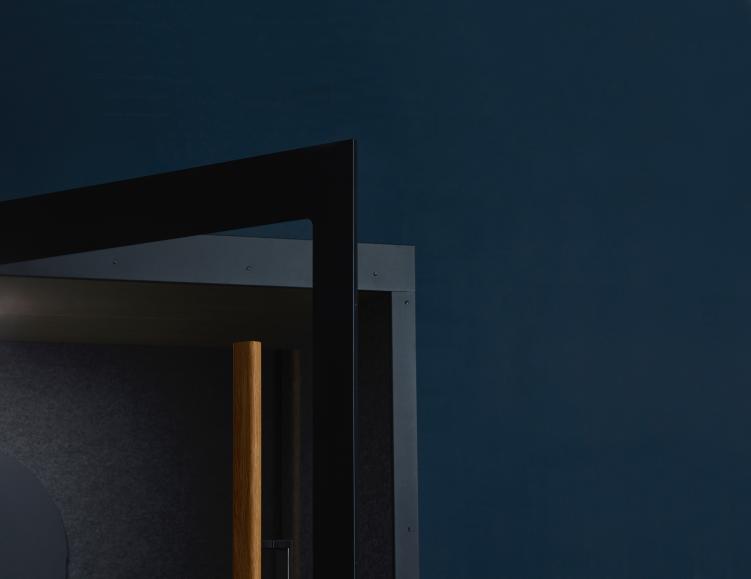Playing music is supposed to be an experience, and everything is an instrument for making quality music. You see, music resonates in the room similarly to the guitar’s body. It contributes to its resonance and tone and affects how you enjoy the music you’re creating.
If you intend to make a recording, the sound of interference and echo might be even worse than in person. This makes a proper music practice room an even greater priority.
Lastly, practice makes perfect, but the process can be quite hard on one’s ears, especially those of other residents. Let’s say you’re trying to improve your bass skills; how long until other residents can take no more? This is another reason why a music practice room must be soundproof, aside from proper acoustics. Here’s how you can achieve all this with little to no effort.
Pick the right room
Soundproofing the right room is a lot easier than doing so with a random room in a random spot.
- Size and shape: The size and shape of the room will affect the number of people you have there. Now, depending on your social circle, music genre, and ambitions, you may need enough room for a band. This is the main reason why garages and basements are so popular.
- Location: Ideally, you want the room to be in the most remote area of the home (preferably downstairs). Now, depending on when you like to practice, you might want an east-facing room to get a bit more light in the morning. Light is a never-ending source of inspiration.
- Personal preference: At the end of the day, this is where you create art. This is why you need to like the room that you pick. Naturally, you’ll decorate your practice room, but at the same time, not every room has the same potential. Try to imagine what the room will look like when you’re done.
You probably won’t have much choice. Still, if you do have this privilege, consider these three things.
Understand how sound behaves in the room
To help you pick the right room and prepare it for musical practice, we’ve prepared a brief Q&A to help you get started.
How does the size of the room affect the sound?
Larger rooms are more likely to help sound develop standing waves and resonances. This is especially the case at specific frequencies. Now, these waves can have positive or negative effects (they can either emphasize or cancel out some sounds).
What types of materials affect the sound the most?
Besides just getting soundproofing materials, you should probably consider fabric covering your room. Covers hard surfaces like leather couches and curtains (heavy curtains) across the windows. Smooth surfaces resonate stronger, and this way, you’re slightly mitigating effects.
Does the furniture arrangement (room layout) affect the sound?
The answer to this is yes. Sound is a wave that won’t go through obstacles, so having something between the source of the sound and the recipient will have a massive effect. You can use this knowledge to soundproof your room or create segments.
Soundproofing equipment
The issue of room soundproofing is not a very complex one. You figure out what materials are best for soundproofing the area and try to cover as much as you can with it. Once you’re done, you seal the gaps, and there you have it.
Ideally, you would do drywall since adding an extra thickness to your wall (and an extra layer) really makes a difference in keeping it quiet. The type of drywall you use will also affect the outcome of this project.
Now, if you want to get some extra material and make a difference, you can get acoustic panels, bass traps, diffusers, and mass-loaded vinyl that you can install in wall partitions and ceilings.
Keep in mind that weather stripping and door sealing need to be done, as well. It doesn’t matter how thick your walls are, as long as the sound escapes via windows. Do this slowly, but ensure you don’t miss a single inch. The quality of materials you use will make a difference.
Budget options to soundproof your room
In an ideal world, you would do the drywall, plaster some acoustic panels on the walls, and replace every piece of equipment in the room; however, what if you can’t afford this? Well, here are three things you can do even on a budget.
- Seal gaps: First, try to spot if there’s any draft (there are so many tricks you could use to diagnose this). Then, make sure to figure out (or google it) the best type of sealant for that material (the surrounding material). After sealing all the gaps, the room will already be quieter (from both sides).
- Get a draft stop: The same way as heat, noise is also escaping your practice room underneath the door. The simplest way to stop it is to get a draft stop. If you doubt whether this will make an effect, just try folding a towel and stuffing it there for a while, and you’ll see the difference.
- Get some curtains: Windows are large, smooth surfaces that vibrate quite strongly. Covering them with some drapes or curtains should make a world of difference.
Finally, these three ideas are solid, even if you’re not working on a budget.
Consider the types of equipment you’ll use
Ultimately, this might not be just a practice room but your studio. It’s usually smart to start thinking about the equipment in that scenario. Where are you going to sit? What kind of microphone will you get (directional?), etc.
While acoustic panels may not be necessary for regular soundproofing, those who want to turn their music practice room into a recording studio need to go one step beyond that.
Even if you don’t intend to make purchases immediately, making a future list as soon as possible might be a good idea. This way, you can mold the practice room around it.
Wrap up
A quiet and safe home should always be your priority, but sometimes the noise won’t come from outside. Still, with a soundproof practice room, this should not impact family/roommate relations. While you can do this even on a budget, it’s usually best to invest a bit more and make something that will last and provide you with a consistent quality experience.


Playing music is supposed to be an experience, and everything is an instrument for making quality music. You see, music resonates in the room similarly to the guitar’s body. It contributes to its resonance and tone and affects how you enjoy the music you’re creating.
If you intend to make a recording, the sound of interference and echo might be even worse than in person. This makes a proper music practice room an even greater priority.
Lastly, practice makes perfect, but the process can be quite hard on one’s ears, especially those of other residents. Let’s say you’re trying to improve your bass skills; how long until other residents can take no more? This is another reason why a music practice room must be soundproof, aside from proper acoustics. Here’s how you can achieve all this with little to no effort.
Pick the right room
Soundproofing the right room is a lot easier than doing so with a random room in a random spot.
You probably won’t have much choice. Still, if you do have this privilege, consider these three things.
Understand how sound behaves in the room
To help you pick the right room and prepare it for musical practice, we’ve prepared a brief Q&A to help you get started.
How does the size of the room affect the sound?
Larger rooms are more likely to help sound develop standing waves and resonances. This is especially the case at specific frequencies. Now, these waves can have positive or negative effects (they can either emphasize or cancel out some sounds).
What types of materials affect the sound the most?
Besides just getting soundproofing materials, you should probably consider fabric covering your room. Covers hard surfaces like leather couches and curtains (heavy curtains) across the windows. Smooth surfaces resonate stronger, and this way, you’re slightly mitigating effects.
Does the furniture arrangement (room layout) affect the sound?
The answer to this is yes. Sound is a wave that won’t go through obstacles, so having something between the source of the sound and the recipient will have a massive effect. You can use this knowledge to soundproof your room or create segments.
Soundproofing equipment
The issue of room soundproofing is not a very complex one. You figure out what materials are best for soundproofing the area and try to cover as much as you can with it. Once you’re done, you seal the gaps, and there you have it.
Ideally, you would do drywall since adding an extra thickness to your wall (and an extra layer) really makes a difference in keeping it quiet. The type of drywall you use will also affect the outcome of this project.
Now, if you want to get some extra material and make a difference, you can get acoustic panels, bass traps, diffusers, and mass-loaded vinyl that you can install in wall partitions and ceilings.
Keep in mind that weather stripping and door sealing need to be done, as well. It doesn’t matter how thick your walls are, as long as the sound escapes via windows. Do this slowly, but ensure you don’t miss a single inch. The quality of materials you use will make a difference.
Budget options to soundproof your room
In an ideal world, you would do the drywall, plaster some acoustic panels on the walls, and replace every piece of equipment in the room; however, what if you can’t afford this? Well, here are three things you can do even on a budget.
Finally, these three ideas are solid, even if you’re not working on a budget.
Consider the types of equipment you’ll use
Ultimately, this might not be just a practice room but your studio. It’s usually smart to start thinking about the equipment in that scenario. Where are you going to sit? What kind of microphone will you get (directional?), etc.
While acoustic panels may not be necessary for regular soundproofing, those who want to turn their music practice room into a recording studio need to go one step beyond that.
Even if you don’t intend to make purchases immediately, making a future list as soon as possible might be a good idea. This way, you can mold the practice room around it.
Wrap up
A quiet and safe home should always be your priority, but sometimes the noise won’t come from outside. Still, with a soundproof practice room, this should not impact family/roommate relations. While you can do this even on a budget, it’s usually best to invest a bit more and make something that will last and provide you with a consistent quality experience.
Related Content: